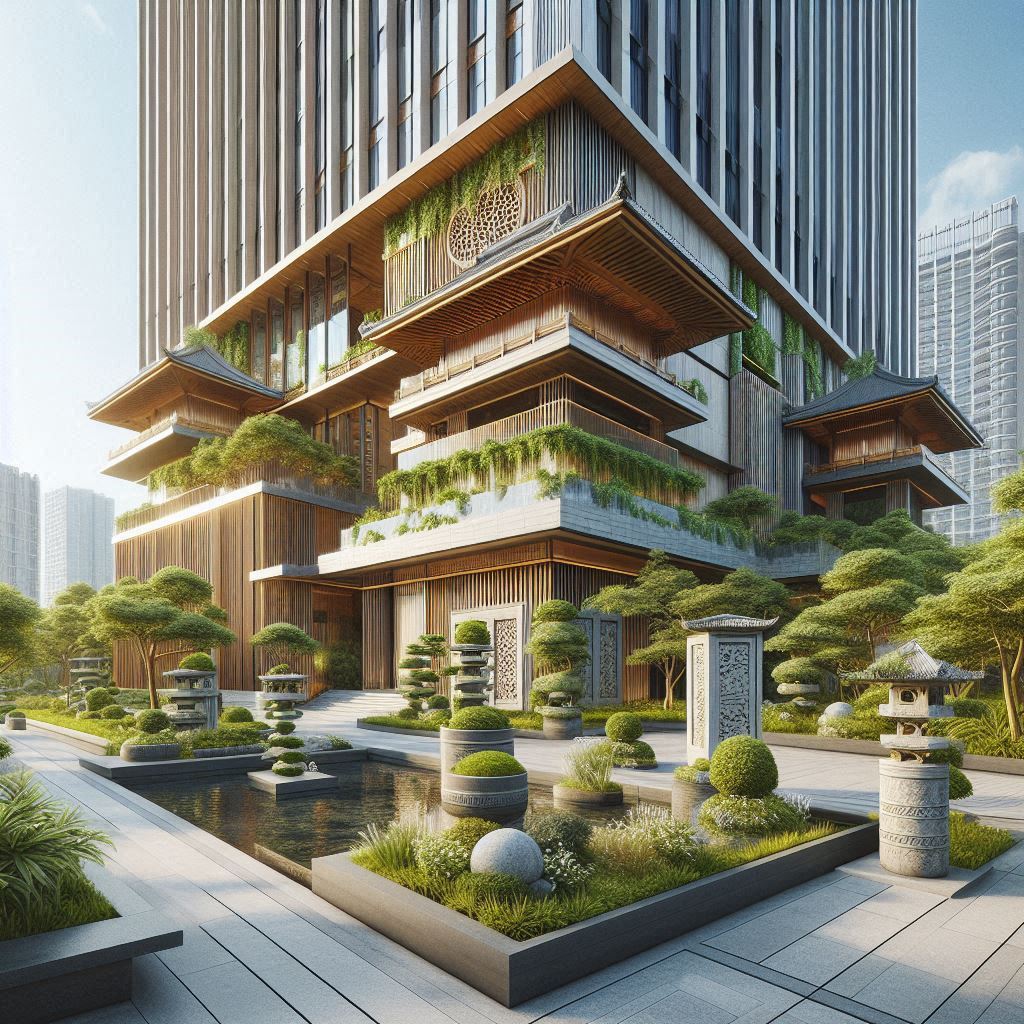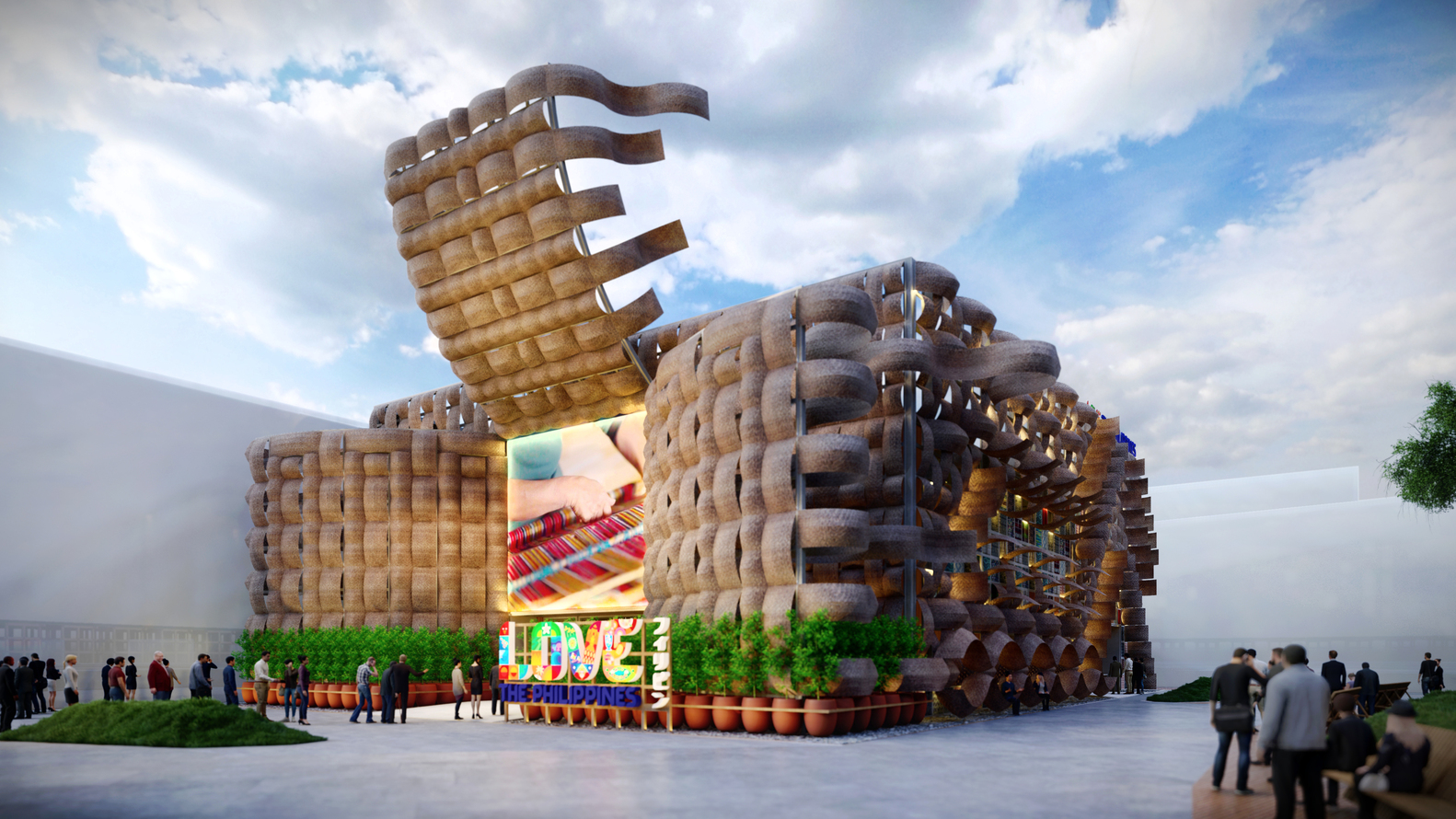
Asian Design & Architecture: Merging Tradition, Innovation, Sustainability
Asian Design and Architecture: Merging Tradition, Innovation, and Sustainability
By David Sterling
Introduction
Asian design and architecture have long captivated the world with their seamless blend of tradition, artistry, and philosophical depth. From the intricately carved temples of Angkor Wat in Cambodia to Tokyo’s cutting-edge skyscrapers, the vast continent holds an incredible diversity of architectural styles. As Asia continues to drive global urban development, more people—both locals and foreigners—are discovering the unique benefits of building within this culturally rich and geographically varied region.
In this blog, we’ll explore how ancient cultural influences inform contemporary structures, how modern technologies are enhancing traditional techniques, and how sustainability is becoming an ever-more central theme. Whether you’re a foreign investor or a construction professional seeking outsourcing partnerships, understanding the nuances of Asian design and architecture is essential. Let’s delve into the cultural heritage, current trends, and future innovations shaping the built environment across Asia.
2. The Rich Heritage of Asian Design
Asia is home to some of the oldest civilizations in the world, and their deep-rooted philosophies and cultural practices are reflected in architectural forms across the continent. From pagodas adorned with symbolic ornaments to courtyard houses designed around Confucian values, these structures are more than mere buildings—they are stories of identity, history, and community.
Chinese architecture, for instance, often follows principles of balance and harmony deeply influenced by Confucianism, Taoism, and Feng Shui. Wooden frameworks, sweeping rooftops, and ornamental gateways serve both aesthetic and symbolic purposes. In Japan, the concept of Wabi-Sabi celebrates simplicity, imperfection, and impermanence, manifesting in minimalist structures that blend seamlessly with their natural surroundings. Meanwhile, Indian architecture offers a rich tapestry of designs influenced by Hindu, Islamic, and colonial heritages—each carrying its own color palette and stylistic features.
In Southeast Asia, countries like Thailand and Indonesia emphasize open-air designs to promote natural ventilation. Balinese architecture integrates spirituality into construction, using local materials such as bamboo and volcanic stone. By looking closely at these iconic traditional structures, we realize the intrinsic link between Asia’s cultural heritage and design philosophies that continue to influence modern buildings today.
2.1 Key Cultural Influences
Cultural influences in Asian architecture go beyond aesthetics, extending to deeper concepts of spirituality, balance, and social harmony. Feng Shui in Chinese design, for example, is a practice that goes back thousands of years. It insists on the correct orientation and energy flow within a structure, believing that natural elements and layout can affect the well-being of occupants. Similarly, Vastu Shastra in Indian tradition lays out prescriptive guidelines for the spatial arrangement of buildings to align with cosmic energies.
Religion and communal living also play a massive role. Buddhist stupas or shrines in various Asian countries are often designed to symbolize a cosmic blueprint, representing the universe's spiritual aspects. This reverence for nature and the cosmos can be seen in everything from the layout of Japanese gardens to the positioning of doors and windows in Southeast Asian homes. By respecting these cultural frameworks, modern architects can create contemporary designs that remain in harmony with traditional values, bridging the past and the present in a meaningful way.
3. Modern Innovations Shaping Asian Architecture
Asian architecture is not just about history and tradition. Today, the region is also a hotspot for cutting-edge innovation, whether it’s integrating smart technologies, experimenting with advanced materials, or pioneering sustainable solutions.

3.1 Sustainability and Eco-Friendly Materials
One of the most noteworthy trends is the move toward sustainable and eco-friendly practices. Building in Asia often involves contending with hot, humid, or monsoon climates, making energy efficiency a necessity. Architects and builders are increasingly using passive cooling strategies—like strategic orientation and shading devices—to minimize reliance on air conditioning. Green roofs, vertical gardens, and shaded courtyards also help regulate indoor temperatures naturally.
Bamboo, historically used in many parts of Asia for scaffolding and smaller structures, has recently gained traction as a primary building material due to its remarkable strength and rapid growth. Similarly, recycled wood and reclaimed materials are incorporated into new designs to reduce waste. According to regional green building councils, Asia has seen a 40% rise in green building certifications in the last five years. This surge underlines the continent’s leadership in eco-conscious design, reflecting a harmonious union of ancient knowledge (like using natural ventilation) and modern science.
3.2 Cultural Fusion in Design
With rapid globalization, many Asian cities are embracing a blend of cultural elements. This cultural fusion is especially visible in cosmopolitan centers like Bangkok, Tokyo, Hong Kong, and Seoul, where architects experiment with hybrid styles that pay tribute to local aesthetics while meeting global standards of functionality and style.
For instance, Seoul’s modern high-rises might incorporate rooflines reminiscent of the hanok—traditional Korean houses—while integrating contemporary glass facades and steel frameworks. In Bangkok, it’s not uncommon to see skyscrapers featuring intricate Thai motifs, offering a cultural flourish in otherwise ultra-modern structures. This fusion approach allows designers to cater to international clients looking for distinctive, culturally anchored designs that stand out in a crowded architectural landscape.
Cultural fusion also extends to interiors, where minimalistic Japanese-inspired spaces may feature Chinese lanterns or Indian textiles. By blending time-honored crafts with innovative approaches, architects and interior designers are creating unique spaces that embody Asia’s diverse heritage while embracing modern lifestyles.
3.3 Technological Advancements
Another key innovation shaping Asian architecture is the adoption of advanced technologies. Building Information Modeling (BIM) has become increasingly common, streamlining collaboration among architects, engineers, and contractors through 3D modeling and real-time data sharing. Complex projects in places like Singapore and Japan leverage BIM to predict potential structural conflicts and optimize construction timelines.
Parametric design software enables architects to create complex, biomimetic forms—structures inspired by nature’s geometry. Such designs can be seen in contemporary museums, commercial centers, and even residential buildings, turning city skylines into futuristic works of art. Meanwhile, modular construction techniques accelerate building processes, meeting Asia’s urgent need for rapid urban development. Countries like China have experimented with 3D printing entire housing units, drastically reducing labor and time costs.
Moreover, smart city initiatives are mushrooming across Asia. In Singapore, sensors monitor water usage and energy consumption in real-time, reducing waste and improving sustainability. As urban populations grow, technologies like AI, IoT, and robotics help manage infrastructural demands, from traffic flow to waste collection. These cutting-edge advancements ensure Asia remains at the forefront of construction innovation worldwide.
4. Spotlight: The Philippine Pavilion at Expo 2025
Global expositions often serve as a stage for countries to showcase their architectural prowess and cultural identity. The upcoming Expo 2025 is no exception, and the Philippines is making headlines with its pavilion designed by Carlo Calma Consultancy. This pavilion embodies the theme of “Nature, Culture, and Community,” reflecting the interconnectedness that is integral to Filipino heritage.

4.1 Nature, Culture, and Community
The pavilion’s concept merges organic shapes, reminiscent of the Philippines’ lush archipelagic landscape, with culturally rich motifs that speak to communal values. Visitors can expect a multi-sensory experience where art, design, and technology collide. Emphasizing open spaces and green elements, the pavilion encourages interaction and dialogue—much like the social fabric of Philippine communities.
By weaving in local art forms, indigenous materials, and interactive displays, the pavilion aims to capture the nation’s essence. It stands as a striking example of how Asian design can celebrate both heritage and modern aspirations, setting the stage for a global audience to appreciate.
4.2 Sustainability Practices
Beyond aesthetics, the Philippine Pavilion prioritizes sustainability. Its designers have incorporated recycled materials, energy-efficient lighting, and solar solutions to reduce carbon footprint. Natural ventilation is harnessed through strategic structural openings, showcasing how form and function can coexist for environmental harmony. This approach parallels broader trends in Asian architecture, where maintaining ecological balance is a focal point. By presenting a pavilion with minimal environmental impact, the Philippines hopes to inspire other Expo visitors to adopt greener design principles in their own projects.
5. Design Considerations for Building in Asia
5.1 Climate and Environmental Factors
Asia’s vast geography means climates range from tropical rainforests to arid deserts and snowy highlands. In tropical regions like Southeast Asia, high humidity and intense rainfall call for overhangs, elevated floors, and robust drainage systems. Passive cooling is crucial—large windows, cross-ventilation, and open courtyards help minimize reliance on mechanical air conditioning. Similarly, areas prone to typhoons or monsoons necessitate reinforced structures and flood mitigation measures.
In more temperate zones like parts of China, Japan, and South Korea, buildings may incorporate insulation and heating solutions adapted to cold winters. Urban heat islands also pose challenges in mega-cities, prompting architects to design green rooftops and vertical gardens to help regulate temperatures. Understanding these diverse climate factors is essential for ensuring durability, comfort, and sustainability in Asian structures.
5.2 Regulations and Compliance
Each Asian country has its own set of regulations regarding construction safety, environmental protection, and cultural preservation. Japan’s strict seismic codes, for example, demand advanced engineering to withstand frequent earthquakes. In places like Hong Kong and Singapore, space constraints lead to stringent high-rise building regulations and complex permitting processes.
For foreigners or businesses new to the region, navigating these rules can be daunting. Collaborating with local architects, engineers, or outsourcing specialized construction services can streamline the process. Firms like islandbuilds.com offer guidance on meeting regional codes, ensuring projects are compliant and successful. From environmental impact assessments to heritage site restrictions, awareness and adherence to local regulations help prevent costly delays and maintain the integrity of cultural and natural resources.
6. Conclusion
Asian design and architecture present a tapestry of influences, weaving together millennia-old traditions, modern innovations, and forward-thinking sustainability practices. From intricately carved temples and palaces to high-tech urban hubs, Asia offers a diverse architectural landscape that continues to evolve. In many ways, this evolution honors the past while embracing the future, demonstrating that harmony with nature, community, and culture remains central to the region’s identity.
For both foreign investors and local professionals, building in Asia is an opportunity to create structures that are visually striking, culturally respectful, and environmentally conscious. Whether it’s the Philippine Pavilion at Expo 2025 or the latest smart city project in Singapore, Asia consistently showcases designs that push boundaries and reimagine possibilities. By understanding the unique cultural and regulatory landscape, we can ensure that each project contributes to Asia’s vibrant architectural legacy in a meaningful and sustainable way.
FAQ Section
What makes Asian architecture unique?
Asian architecture is deeply rooted in cultural, spiritual, and communal values, often emphasizing harmony with nature and symbolic motifs. From pagodas to modern skyscrapers, each structure reflects a blend of tradition and contemporary innovation.How do modern innovations fit into traditional Asian designs?
Modern innovations like 3D printing, BIM, and modular construction can complement traditional motifs by enhancing efficiency and sustainability. This fusion allows architects to preserve cultural identity while embracing cutting-edge technology.Can foreigners easily build in Asia while respecting cultural nuances?
Yes. Collaborating with local experts or outsourcing to specialized construction services ensures that projects meet cultural, regulatory, and environmental requirements, fostering respect for local traditions and practices.What role does sustainability play in Asian architecture?
Sustainability is increasingly central, with architects using natural ventilation, green roofs, renewable materials like bamboo, and energy-efficient technologies. Asia leads in green building certifications, illustrating a collective commitment to eco-friendly construction.How do I navigate different building regulations across Asian countries?
Research local guidelines, partner with regional architects, and consult specialized firms like IslandBuilds.com to ensure compliance, streamline logistics, and deliver successful projects in various Asian markets.
